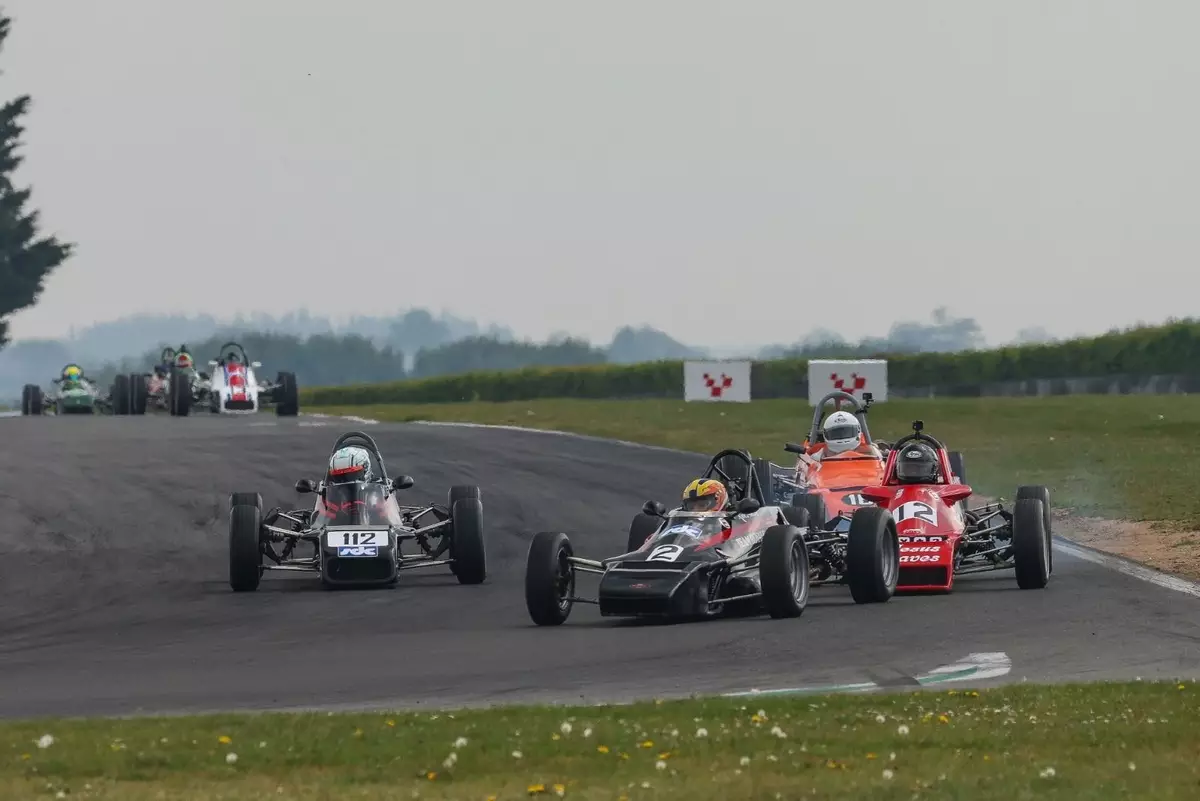The Snetterton circuit, renowned for its long-standing ties to motorsport, played host to a remarkable gathering of vintage racing enthusiasts last weekend. The Historic Sports Car Club kicked off their season with an electrifying weekend that saw Formula Ford racing reignite the passions of fans and drivers alike. With a lineup that included cars spanning from the late 1960s to the early 1980s, the event was nothing short of a nostalgic stroll through racing history. The introduction of the Festival in 1972 at this very circuit marked the beginning of a beloved tradition, and this year’s gathering honored that heritage.
One of the most captivating performances came from the 78-year-old veteran, Rick Morris, who expertly maneuvered his Royale RP29 to victory in Saturday’s Classic championship round. His choice of a historically accurate livery was a fitting tribute to the car’s legacy. The chaos that unfolded during the race, particularly when Adriano Medeiros collided with rookie driver Tom Gadd at Chapman, highlighted the unpredictability and excitement of motorsport. Morris’s remarks about seeing “cars going everywhere in my mirrors” encapsulated the dynamic nature of the race—not just a competition but a spectacle filled with tension and drama.
The Rise of Debutants
Newcomers like Tom Gadd were undeniable highlights of the event, demonstrating that fresh talent is as vital to the sport’s evolution as veteran wisdom. Gadd’s remarkable recovery to finish second during his first outing in the RF81 underscores the competitive spirit ingrained in Formula Ford racing. His initial expectations of a top-10 finish evolved into unexpected glory, showing the thrill of surpassing one’s own predictions. Morris, alongside seasoned competitors like Medeiros and Philip Senior, created an atmosphere dense with rivalries and camaraderie that is often missing in more modern racing divisions.
As the weekend progressed, Gadd’s duel with Morris in Sunday’s race provided another layer of excitement. Morris may be an experienced hand, but the relentless drive of new athletes promises a bright future for Formula Ford. The experienced driver’s acknowledgment of their skill signals the competitive spirit that makes racing compelling to watch, suggesting that the future of the sport is in capable hands.
Celebrating Tradition and Evolution
The Historic Sports Car Club did not merely celebrate the past; it continuously bridged the gap between what once was and the future of motorsport. The weekend also commemorated the 50th anniversary of Formula Ford 2000, highlighting the evolution of racing technology and strategies. Ben Glasswell emerged as a standout performer, securing two victories in a field primarily made up of Reynards. His triumph—while fortunate—was marked by a level of skill that impressed seasoned rivals who expected a more conventional display of dominance.
Throughout the weekend, a palpable awe for the engineering marvels of yesteryears merged with a recognition of modern strategies, especially in the context of GTO Engineering’s Kevin Jones making headlines with his historic win in the Historic Modsports and Special Saloons race. His success demonstrated how the legacy of earlier racing styles remains relevant and competitive.
A Fanfare of Historic Vehicles
As the weekend unfolded, more than just races highlighted the spirit of the event; the diversity of vehicles on display told fascinating stories all on their own. From the growl of the ADA Janspeed Triumph TR8 turbo to the nimble handling of the Lola Mk1, there was a rich tapestry of automotive history showcased. Kevin Jones’s weekend was particularly noteworthy—a car that had previously struggled now shines brightly, marking the triumph of perseverance over adversity.
The GTO Engineering segment underscored the importance of preserving automotive heritage while also acknowledging technical advancements. Even teams who faced mechanical setbacks, such as oil pressure issues that grounded Jones on Sunday, contributed to a narrative of resilience, ensuring that every facet of the weekend resonated with excitement.
The Allure of Competition
Beyond the racing, the atmosphere was palpable, infused with a sense of community among the spectators and participants. The Griffiths Haig Trophy races particularly shone a light on the camaraderie that exists when motorsport brings individuals together to celebrate shared passions. Drivers from diverse backgrounds engaged in spirited competition, and the dedication of organizing teams ensured the event ran smoothly, allowing for enjoyment to flourish.
Throughout the competition, the thrill of racing was further heightened with teams demonstrating impressive strategic acumen—ensuring that each race wasn’t merely a drive to the finish line, but a strategic battle where every decision could impact the outcome. This multifaceted allure of motorsport, coupled with the backdrop of history, created an unforgettable ambiance that left fans looking forward to the next event with anticipation.
Snetterton’s historic event illuminated the engaging spectacle that is vintage racing—reminding us all why motorsport continues to be revered. As the engines roar and the tires screech through each turn, the legends of yesterday merge with the daring of today’s driven youth, ensuring that racing remains a timeless chase of adrenaline and glory.


Leave a Reply